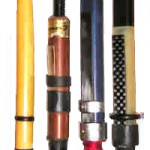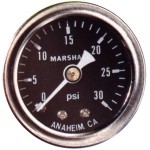Tune Your Drones Like the Pros
 Despite the fact that the vast majority of professional pipers tune their pipes in a drastically more efficient way, almost all teachers teach beginners (and intermediates, ack!) the looong way. You know, the long way?
Despite the fact that the vast majority of professional pipers tune their pipes in a drastically more efficient way, almost all teachers teach beginners (and intermediates, ack!) the looong way. You know, the long way?
- Tap off all of your drones
- Diddle on your chanter
- “Flick” open the outside tenor drone
- Tune open tenor to Low A
- Check it with your Low A 20 or 30 times
- Open up the bass drone
- Attempt to tune the bass drone to the open tenor drone
- Check with your Low A 20 or 30 times
- Conclude that “it doesn’t sound in tune”
- Repeat steps 1 through 9 for the rest of your practice session (if not years)
- Finally realize your dream of getting two drones in tune with Low A
- Open up the middle tenor drone
- Attempt to tune the third drone with the open bass and tenor drones
- Check with your Low A 20 or 30 times
- Conclude that “it doesn’t sound in tune”
- Repeat steps 1 through 15 for the rest of your practice session (if not the rest of your life)
- Realize your dream of getting all three drones in tune with Low A
- Realize that your Low A is way flat/sharp relative to the other 8 notes on the chanter
- Move tape
- Repeat steps 1 through 19 with the hope you may get these things in tune at some point before you die
While the loooong way has its benefits (does it?), consider tuning your pipes the way the pros do.
- Get your bass and middle tenor drones in tune with the outside tenor drone
- Analyze whether your whole bagpipe scale is sharp or flat relative to the drones
- Move your outside tenor in the appropriate direction
- Repeat 1, 2, and 3 as necessary
Let’s go into the four steps in more depth. Just before we do, though, note that your overall level of bagpipe steadiness will correlate to your overall quality of bagpipe tuning. That means
- You have to have good bagpipe maintenance (no leaks, properly calibrated reeds, etc.).
- You have to have a steady blowing cycle, with no surging or sagging in the blowing.
- You have to blow the same pressure when you tune as when you play.
This tuning process will still work great if you haven’t mastered your steadiness yet, but don’t expect a Gold-medal quality pipe without Gold-medal quality steadiness! Now that we have that covered, here is some more detail on the steps.
Step 1: Get your bass and middle tenor in tune with the outside tenor. Practice this with a cork in the chanter stock. Shut off the middle tenor and practice locking the bass into the tenor. Stuart Liddell taught me a great trick as you work on this, which is to listen to the tenor drone, rather than listening to the bass, as you tune these two together. Because of the way harmonics work, listening to the tenor will give you more clues as you work to lock them in.
Once the bass in locked to the outside tenor, only then should you open up the middle tenor. Lock that in to the bass and the tenor.
Once (and only once) you are comfortable and awesome doing this with the cork in should you try it with the chanter, playing a well-blown High A. Important Note: Although my chanter is playing High A during Step 1, I am not at all concerned with the chanter yet. Only in locking the drones in together.
Step 2: Analyze whether your whole bagpipe scale is sharp or flat relative to the drones. Once the drones are locked, play a short tuning phrase that covers all notes on the chanter. Don’t just play a scale either—put something together that combs different arpeggios, and uses some common scale runs and technique, etc. Listen to the overall tuning of the chanter—NOT any one note like Low A. Overall, are you sharp, or flat? This is definitely the hardest part. In all honesty, until you learn to hear it instinctually, I recommend just guessing. You’ll know if you’re wrong because the tuning will get worse. Then, you know for sure which way to go in the next cycle through the tuning steps.
That being said, the blow test is also a great tool. It’s very simple:
- If you decrease blowing pressure and the tuning gets better, that means your chanter is sharp relative to the drones.
- If you increase the pressure and the tuning gets better, it’s flat.
Use this test when you are almost there, but aren’t sure whether you’re a tad sharp or a tad flat.
Step 3: Move your outside tenor in the appropriate direction. So, if you’ve decided your chanter is flat relative to your drones, you’ll want to move your outside tenor upwards, to flatten the drone. If it’s sharp, you’ll move it down. If you think you’re way flat/sharp, make a big move. If you’re close, make a small move. You’ll get a sense for how much to move your drones the more you repeat this process.
Step 4: Repeat steps 1, 2, and 3 as necessary. Obviously, when you move your tenor in step three, your other drones will now be out of tune with each other. So, you’ll go back to step one and repeat this whole process again. When you get to the point where you can’t improve the tuning, then you’re done! That’s all!
So, that’s it. A typical professional piper will go through this basic process many times during tune up. The more they go through the steps, the closer they bring their drones in with their chanter. The sooner you can learn these skills and move beyond the looong way, the sooner you’ll develop real control over your drone tuning.
 Pipehacker
Pipehacker






